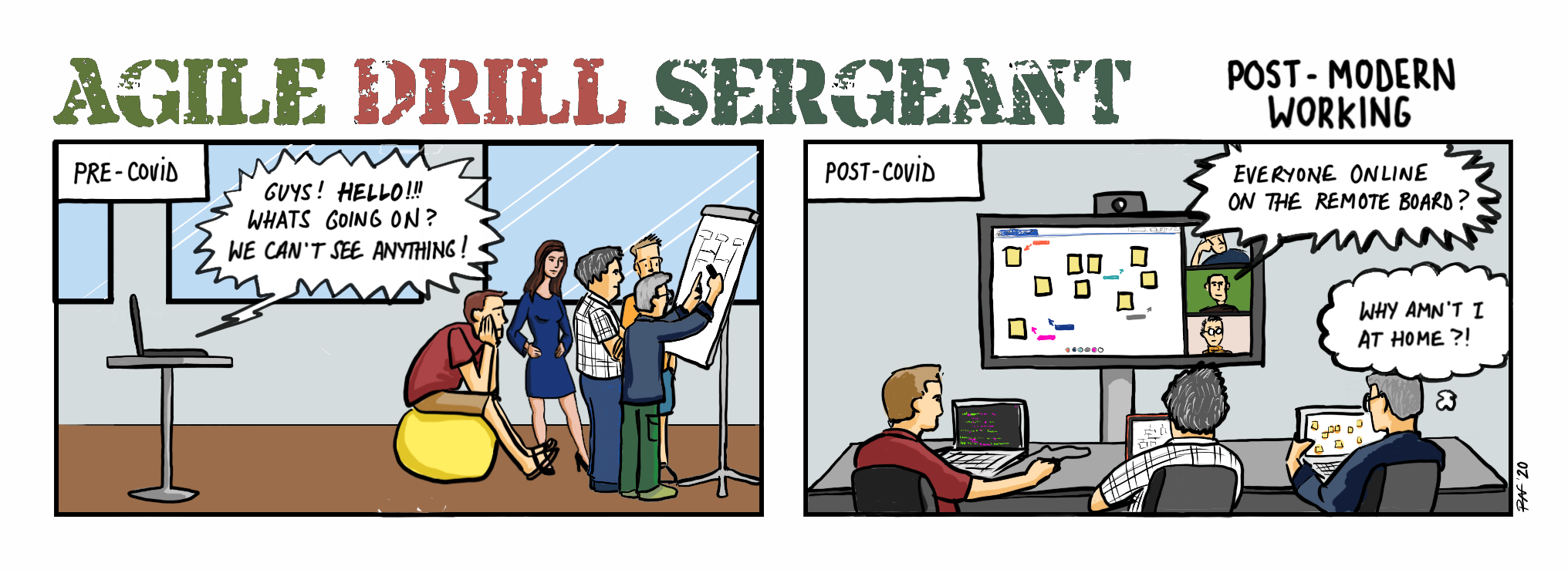Post-Modern Working
I think we’re in for a challenging time on the workfront post-covid.
It used to be that we’d have a couple of team members calling in remotely for meetings. This was always tricky to do – as very often the group physically in the room would develop a dynamic which the remote members couldn’t follow. A lot of information would get lost – not least because many discussions would continue after the meeting officially ended.
Covid levelled the playing field – we all became remote team members. We all had to deal with the “wait your turn” aspect of online meetings. Everyone was equally handicapped – resulting a single dynamic for the whole group. Not the most efficient or effective, but the best we can do under the circumstances.
But what happens when we go back? What happens when some of the team is in the office and the others are at home? Because without a doubt there will be a lot more remote working after Covid. Companies can’t expect their employees to keep up the productivity when working from home during a pandemic and then say, afterwards, “we need you all back in the office now!”.
So the cat is out of the bag. Home-working will be more present than it was before. Unfortunately, as with many changes, it’s likely that the pendulum will swing from little home-working to anyone can work from home at any time – sure didn’t we do it during Covid? (This is my personal dread – I’m too old to believe that virtual meetings with virtual teams can match a co-located team.) Will we continue to have the equivalent of online meetings? Still use the online whiteboards and stickies? More than likely. Even for the people sitting in the office. Imagine how loud that is going to be in open-plan offices, when all meetings are still taking place online!
Unless we completely want to do away with physical presence in the office, there will have to be some sort of fixed working days for a team. Three days a week when all members of the team are physically in the office. I could well imagine, that that would be Tuesday to Thursday. I’ve tried coaching teams in a company where there was a lot of home-office. It was virtually impossible to find a day when the whole team would be in the office. Not surprisingly they were really a group and not a team. But the point still stands – how are you supposed to generate a team spirit if the team is never together as whole?
The catch with working from home is that it’s not the same experience for everyone. Many of us don’t have an “office” at home. We don’t have proper tables, chairs, lighting, space, internet connectivity, printers, privacy, peace and quiet, etc. But those are just the tangible physical aspects. Personally, I miss the human interaction of being in an physical office. Working from home on a quiet day can feel very isolated. Like if you fell off the edge of the world, no one would notice. There is no small talk in between meetings, there are no hugs when you haven’t seen someone in a while, there is no banter at the coffee machine – no shared experiences. You can’t read a room or other people when you’re sitting on a zoom call. It’s much harder to assess people’s mood and thinking. You can’t take someone aside for a coffee afterwards to clear things up. I certainly don’t feel like I can do my job as a coach as well remotely as I can in situ. And finally there is no serendipity. No chance meetings, no chance conversations that lead to new opportunities or insights.
Unfortunately these human aspects are not measurable in a simple way. I’m afraid they will get lost as the new right to work from home is asserted in a similar extreme to now. The pendulum will swing from little or no home office to too much home office. But the effects won’t be felt immediately. So expect there to be another wave of returning to the office, as companies learn to value the soft productivity of bonding that happens in the workplace.
